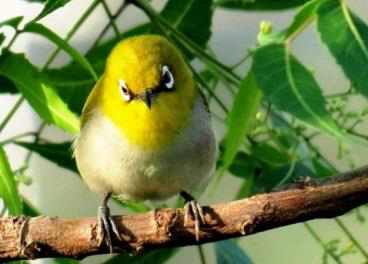Winters have been around in the IIHMR campus at Jaipur, and so have been visitors of the avian family- Redstarts, Wagtails (white, yellow and pied) and Wheatears. In the changing hues of sunlight from misty foggy white to mellow yellow, these winged boarders can be met with as one wades pathways along stretches of white champa, and clusters of bottle brush trees or line of multi colour bogenwalia bushes or curvy line of kaner (yellow trumpet flowers bush) on the other side of the quaint little wooden bridge that gives a passing illusion of being, in a bountiful natural reserve.
Whether it is the pulsating of Orange-red lower rump and tail or the proud display of the deep black chest by Redstarts or the swaggering Wagtails in the dew covered lush green lawns of IIHMR, or the swift darting of wheatears in thick verdure of trees, winter truly is a blessing for it invites you to make most of life, invest it with enduring meaning.
 |
Black Redstart |
Redstart also called Black Redstart is a widespread breeder in south and central Europe, Asia, northwest Africa and migrates to Indian sub-continent in winters. It is one of the earliest to arrive signaling the onset of winters in Indian Institute of Health Management Research (IIHMR). The University is an institutional typology of courts with small tended gardens surrounded by Kikar and Neem forest or orchard plantations of kachnar trees to modify the harsh winds from the north-west.
As the morning starts spreading outside the D Block quarters the misty white light of dawn brings to light a conical shape, the cluster of bottle brush trees reveals itself as a favorite rendezvous for many birds- sparrows, warblers, tailor bird, bulbuls, purple sun birds, babblers and ashy prinias. Not to be seen earlier small teams of Oriental White Eye seen dancing and chirping through the dense foliage is an obvious spotting. But like most obvious things holds a ring of mystery, encrypted in the activity of these messengers between ‘the steadfast earth and the rolling heavens’.
 |
Oriental White Eye |
The chasing of these tiny arboreal avian teams near the club house and across the road along the raised walkway going up the slope of the natural watercourse have been lessons in their complex behavior.
Wagtails strut around proudly in groups of three four sometimes seven or eight in the lush green lawns (called peacock gardens in the IIHMR slang) effortlessly sloping gently and merging with the road that separates built environments of academic and residential blocks of IIHMR. Natural and man- made aqueducts ensure conveyance of water and life across these two different morphological units.
 |
White Wag Tail |
A significant busy crowded hub is the flower laden kachnar tree, located near the archway over gentle gulley of natural slope, an old gateway of rain water into the lands ahead. Countless birds of many varieties can be seen busily chirping through its spread out and dense foliage. A ‘hot spot’ for warblers of different kinds, this proud tree is the tallest biggest and the oldest among kachnar
plantations, so tells Ram Karan proudly displaying the lines of small and budding kachnar trees he and his team has planted along the raised walkaway that offers a dignified escapade to stroll, have conversations in solitude or cross over towards the road.
Not so long ago in the 1990s when rapid urban expansion was beginning to have its telling effects on the historical Jaipur city, this creative environmental enterprise was nominated for the first prize in the prestigious Aga Khan Award. That was in 1995, a marker of time, a definite moment in this living habitat, relevant in contemporary times more than just a memory.
 |
Photo by Akhil Aggarwal, PhD student, IIHMR University |
As we muse over this, our tiny passerine friends are busy with their purposeful hopping and chirping that looks like swift dancing harmoniously synchronized to their sweet melodious sound, the soft nasal cheer so characteristic of this little hard to spot resident bird whose fervent activity in
the winters is sure to catch anyone’s eye. On closer hearing this is a quite a melodious tune made up of patterns of tonality whose interludes are soft and discernible only after considerable patience.
Oriental White eye is small (about 8–9 cm long) with yellowish olive upper parts, a white eye ring, yellow throat and vent. Coming eye to eye with the flickers of white eye is a delightful feeling and at the same time an almost mystical sublimation of the soul as it gets transposed into some alien world where the usual cacophony of meanings dissolves to give way to a serene feeling of stillness that is the result of experiencing a perfect raga or a rustic folk melody.
On repeated days this soul uplifting experience carried with it fragrances of an elusive fleeting mystery. Impervious to this, the deft olive green ones dart from one place to another looking at you sometimes gratingly and at times gratifyingly. Any attempts at deciphering the countless flickers of the oriental white eye is akin to approximating the infinitude of the dance sequences of molecules and feedback loops that make up them, you and ‘I’.
Composed By:
Prof. Rahul Ghai
Associate Professor
IIHMR University



No comments:
Post a Comment